If you imagine that a wild boar is anything like
your average farmyard porker, you might like to revise your opinions. A male
boar may look like a grunting piggly-wiggly, but standing at about three feet
at the shoulder, weighing in at about 150 lbs, it is a wedge of pure muscle,
covered in thick bristles, with four tusks set into a skull of solid bone,
which it carries on shoulders of tremendous strength. It is a bad-tempered,
vicious hulk of spite and fury.
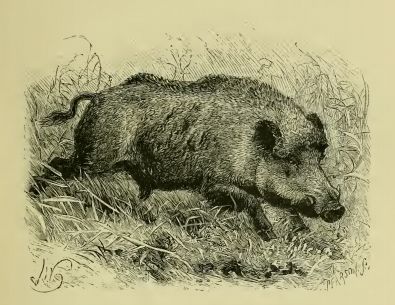 |
| Wild Boar |
Male boars are normally solitary creatures and,
like any wild animal, it will habitually avoid contact with humans but if
cornered or surprised it will stand its ground. Sometimes it will feint and
break off its charge but sometimes it will carry through and attack. It will
hurl itself forward, with foaming jaws and head held low and when it makes
contact it will suddenly arch its head upwards, its curved tusks ripping into
anything they encounter.
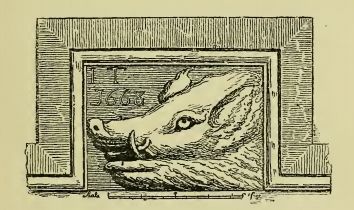 |
| Boar's Head with tusks |
The tusks are crescent shaped, about six to eight
inches long and by wearing against each other have razor sharp edges. Because
of the height of the boar, the most common area of goring a man is in the upper
thighs and lower trunk, and the weight and momentum of a charge can easily kill
a man. Just to give you some idea of their savagery, it is said that hungry
tigers will avoid attacking an adult male boar; if tigers are afraid of them, I
suggest that you should be too.
 |
| Boar Hunting |
We know from inscriptions on their altars that
the Romans in Britain hunted wild boar. William I passed a forest law in 1087
that anyone found guilty of killing a stag, a roebuck or a wild boar should
have his eyes put out. Henry I loved hunting boar, which he called ‘a verie
dangerous exercise’, and a boar was the badge of Edward III. When James I
visited Hoghton Tower in 1617, he was more than once served ‘wild boar pye’;
(there is still a Boars Head pub at Hoghton, and a very good one it is,
too).
 |
| More Boar |
An entry in an account book dated 1683 mentions payment made for a wild
swine, indicating that boars were still running wild at that time. Boars were
finally hunted to extinction in Britain but they have been reintroduced
latterly, with their numbers supplemented by escapees from commercial boar
farms, and if you know where to look, are reasonably easy to find today.
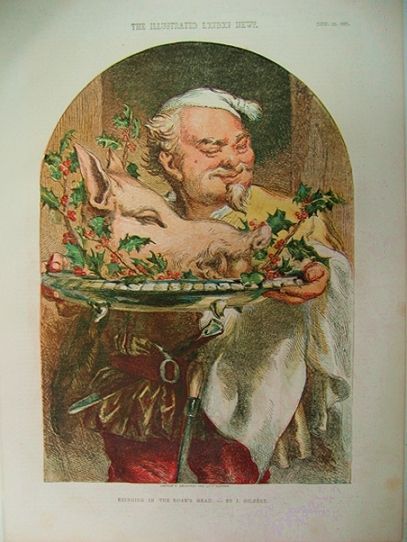 |
| The Boar's Head |
One of
the most ancient of all the ancient Christmas traditions is the feast of the
Boar’s Head. The Scandinavians revered boars and they brought their customs to
Britain as they settled in the north.
Boars were sacred to the fertility god Freyr and were an integral part
of the old Yule festivities. In the Norse myths, the sun is Freyr riding his
golden boar, Gullinbursti, across the skies. Eating pork was a common part of
their diet and especial regard was given to the meat of the wild boars, not
least because of the danger and prestige involved in hunting the formidable
beasts.
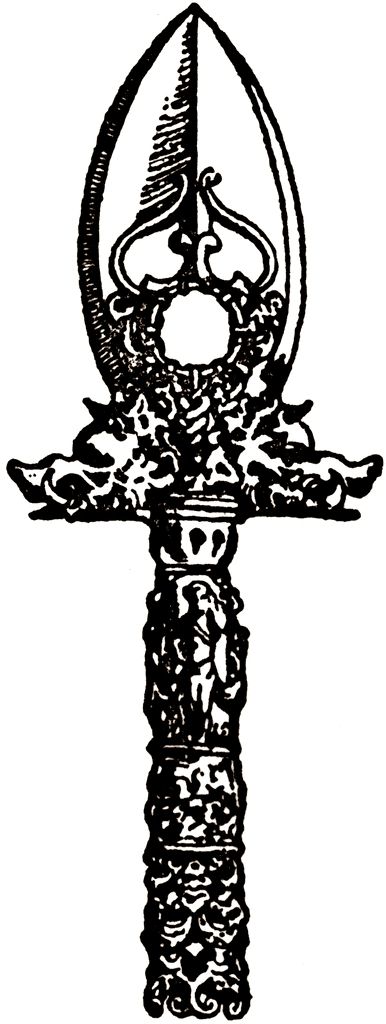 |
| German Boar Spear |
Boars were hunted by flushing them out with dogs, called raches or
ratchet-hounds, and facing them down with boar-spears, which were broad-headed
lances that had a cross-bar behind the head, to prevent the body of the boar
from running down the length of the shaft and reaching the man at the other
end, such was the force of the charge of the creature. If the common man began
his Christmas fare with plum porridge, the Lord of the Manor began his dinner
with the ceremony of the Boar’s Head.
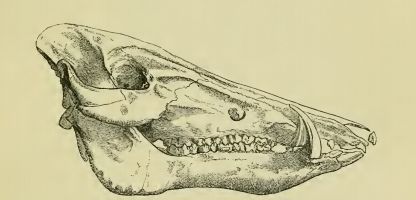 |
| Boar's skull |
Amidst great pomp, the Head with an apple
in its mouth would be brought into the Hall on a gold or silver platter,
accompanied by servants and members of the household and very often by the
hunter who had killed the boar. Minstrels played, and one of the oldest
Christmas carols is the Boar’s Head Carol, the most widespread version
of which dates from Wynkyn de Worde’s printed book Christmasse Carolles
of 1521.
 |
| The Boar's Head Carol |
The custom the Boar’s Head continues at Queen’s College, Oxford, where
it has been performed since the fourteenth century. The Head is borne in by
four men, preceded by a solo singer who sings the verses and followed by the
choir, who sing the chorus, and the platter is brought to the table of the
Provost, who serves slices first to the High Table and then to the rest of the
tables.
 |
| The Lord Boar |
The apple (or sometimes orange or lemon) in the mouth of the Head was
stuck with a sprig of rosemary, which was once a popular Christmas decoration,
symbolising remembrance (Shakespeare refers to it in Hamlet, where
Ophelia says, “There's Rosemary for you, that's for remembrance; pray you,
love, remember.”). It was used in funeral wreathes but was also used in
marriage celebrations (Anne of Cleves wore sprigs of rosemary in her hair at
her marriage to Henry VIII). The name of the herb has connotations with Mary,
Christ’s mother, one of who’s symbols was the Rose, although the name comes
from rosmarinus – ‘dew of the sea’ – and there is a legend that the
rosemary bush hid the Holy Family from Herod’s soldiers in their Flight into
Egypt. Rosemary was included in Christmas garlands, together with holly, ivy,
bay laurel and mistletoe.
 |
| Thomas Bewick - Wild Boar |
The first verse and the chorus are:
Solo: The boar’s head in hand bear I
Bedecked with bays and rosemary
I pray you, my masters, be merry
Quot estis in convivio (So many as are in the feast)
Chorus: Caput apri defero, Reddens laudes domino
(The boar’s head I bring, giving praises to God)
There are other versions of this carol but all
follow roughly the same form.
 |
| Another version of the Boar's Head Carol |
There is a legend at Oxford that an undergraduate,
Copcot, was walking in the woods of Shotover when he surprised a boar. The boar
charged Copcot, who had only his copy of Aristotle to protect himself, so he
thrust the book into the boar’s mouth with the words ‘Græcum est’
(roughly, ‘It’s all Greek to me’) and the animal choked to death on the
indigestible tome. Copcot beheaded the dead beast to retrieve his book and
carried both back to his college, where the head was served up at a feast and a
tradition was born.
No comments:
Post a Comment